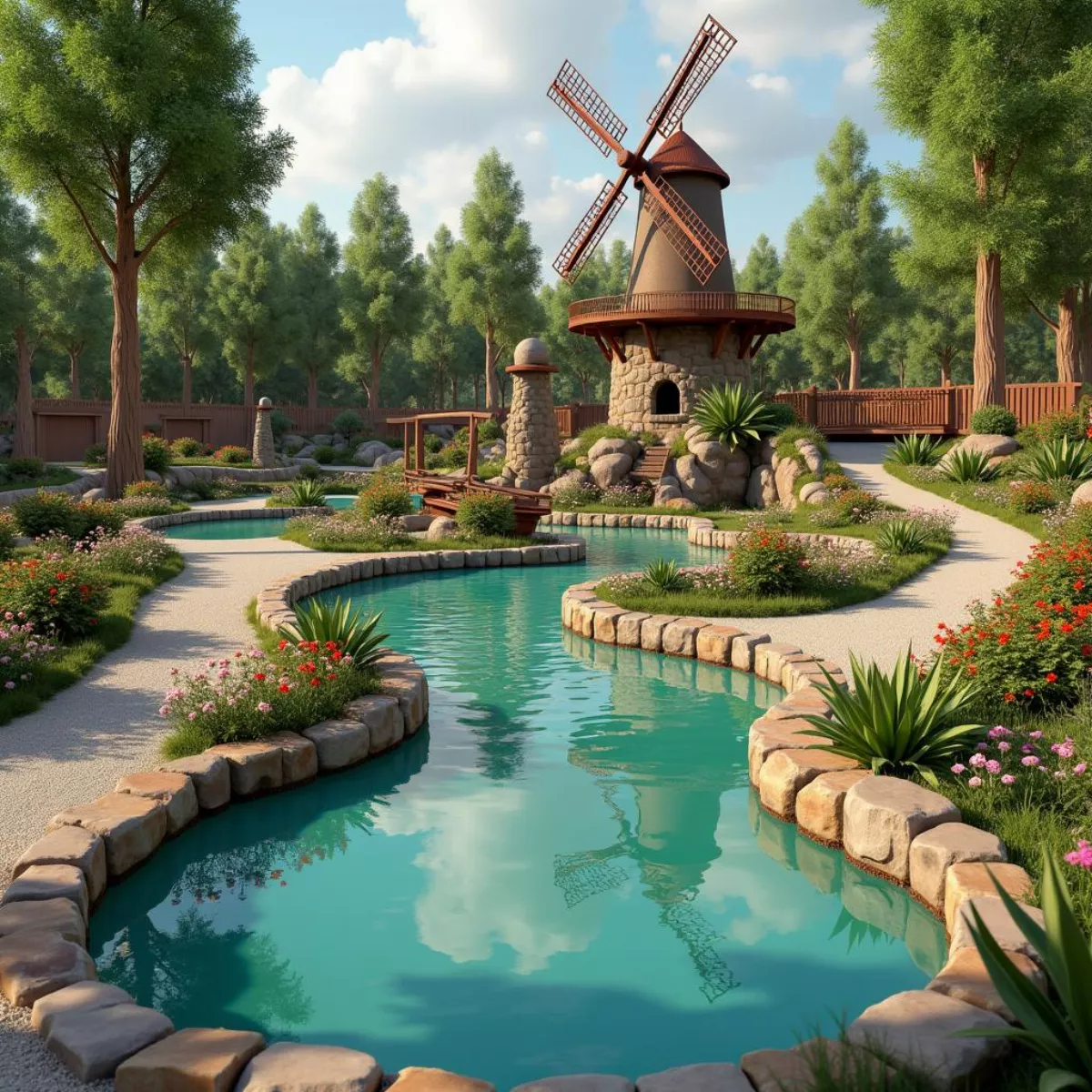When it comes to family fun outings, few activities are as beloved as putt-putt and mini golf. Whether you’re planning a relaxing afternoon or a competitive date night, both provide hours of entertainment. But do you know the differences between the two? In this article, we’ll take a deep dive into the world of mini-golf and putt-putt, exploring their history, similarities, and differences to help you choose which is right for your next outing.
The History of Putt-Putt and Mini Golf
Putt-Putt
- Putt-Putt is a brand name that’s commonly used to describe a specific style of miniature golf.
- It originated in the 1950s, focusing on a more casual and family-friendly experience.
- The term “Putt-Putt” comes from the sound made during putting and the simplistic design of the courses.
Mini Golf
- Mini golf encompasses a broader range of golf courses, offering a richer variety of themes and obstacles.
- Its origins can be traced back to the late 1800s in Scotland, where people made smaller versions of golf courses to practice their putting.
- Mini golf gained significant popularity in the United States during the mid-20th century.
Similarities Between Putt-Putt and Mini Golf
Although there are nuances that set them apart, putt-putt and mini golf share many similarities, including:
- Fun for All Ages: Both are designed to be enjoyable for families, groups, and couples.
- Shorter Gameplay: Each game typically consists of 18 holes but is played over a shorter time frame than traditional golf.
- Equipment Used: Players use a putter and a golf ball to complete the course.
- Scoring System: Both employ a stroke-play scoring system where fewer strokes symbolize better performance.
Key Differences Between Putt-Putt and Mini Golf
While they might sound similar, putt-putt and mini golf have essential differences. Here’s a breakdown of how they vary:
| Feature | Putt-Putt | Mini Golf |
|---|---|---|
| Course Design | Simple obstacles, often with themed designs | Varied designs with playful and creative obstacles |
| Difficulty Level | Generally easier, focusing on precision | Can involve more complex challenges and creativity |
| Length and Size | Typically a standard 18 holes, smaller dimensions | More elaborate layouts possibly with larger holes |
| Atmosphere | Family-friendly, casual setting | Can range from whimsical to challenging themes |
| Branding | Often associated with specific franchises | Multiple independent and themed courses exist |
Course Design: A Deeper Dive
Putt-Putt courses usually offer straightforward holes where the focus is on skill and accuracy. You might find ramps, tunnels, or even spins, but the overall objective remains simple: make it from tee to hole with as few strokes as possible.
In contrast, mini golf courses pull out all the stops. You could encounter anything from windmills to medieval castles, each providing unique obstacles. This often leads to a more diverse and entertaining experience, where creative course designs cater to players of different skill levels.
 Challenging Mini Golf Course
Challenging Mini Golf Course
Difficulty Level Matters
One notable feature assisting beginners in putt-putt is its accessibility. The challenges are typically designed for everyone, making it an attractive option for families with small children.
On the other hand, mini golf can have levels of difficulty ranging from basic to extreme. Many courses adapt to a more skilled audience, introducing tricky elements that require advanced strategies. This varying difficulty can add an extra level of excitement for those seeking a challenge.
Are Putt-Putt and Mini Golf the Same?
In casual conversation, the terms putt-putt and mini golf are often used interchangeably. However, understanding the key distinctions can provide better context for your outing:
- Putt-Putt focuses on the precision of putting and fun.
- Mini Golf is more about unique themes and challenging gameplay.
Significant Themes in Mini Golf
To showcase how diverse mini golf can be, let’s explore some popular themes you might find on your course:
- Pirate Themes
- Adventure Lands
- Historical Sites
- Tropical Islands
- Space Adventures
These thematic elements enhance the overall experience and make it a memorable outing.
 Pirate Themed Mini Golf
Pirate Themed Mini Golf
What to Expect at Each
What to Expect from Putt-Putt
- Family-Oriented Environment: Ideal for families and kids.
- Simple Layout: Asymmetrical layouts and straightforward holes.
- Casual Competition: Scores are often kept for fun, rather than pressure.
What to Expect from Mini Golf
- Variety of Options: Availability of themed courses with diverse challenges.
- Creative Obstacles: Ramps, loops, and rollers to navigate.
- Fun and Engaging Ambiance: Great for socializing or celebrating special moments.
Why Choose One Over the Other?
Choosing between putt-putt and mini golf boils down to personal preference, occasion, and the experience you’re seeking. If you want a straight-up putting practice with family fun, putt-putt is your choice. If you’re after a unique experience with imaginative obstacles, go for mini golf.
Tips for a Successful Game
- Dress Comfortably: Wear light clothing and comfortable shoes for prolonged play.
- Have Fun: Keep the competitive side light to ensure everyone enjoys the game.
- Take Your Time: Focus on your shots, but don’t rush the experience.
- Experiment with Techniques: Each hole presents a unique challenge; find which approach works best for you.
Key Takeaways
- Putt-Putt is a specific brand of mini golf focusing on accuracy and casual fun.
- Mini Golf encompasses various creative themes that can provide a broader challenge.
- Course Design and difficulty level are crucial in determining which option suits your outing.
- Always choose according to your group’s preferences – whether you’re after fun or competition!
FAQ Section
1. Is putt-putt the same as mini-golf?
Yes, but putt-putt usually refers to a specific brand of mini-golf that focuses more on precision and traditional putting.
2. How long does it take to play a round of mini golf?
On average, it takes around 30 to 60 minutes to play an 18-hole round of mini golf.
3. Can kids play putt-putt or mini golf?
Absolutely! Both activities are family-friendly and suited for kids of all ages.
4. What should I wear to a putt-putt or mini-golf outing?
Dress comfortably for fun and flexibility; athletic shoes and casual attire are recommended.
5. Are reservations necessary for mini-golf courses?
Reservations are usually not required, but it’s best to check in advance, especially during peak seasons.
6. Is there a scoring system for mini golf and putt-putt?
Yes, both use a stroke-play scoring system where fewer strokes indicate better performance.
7. Can I host a birthday party at a putt-putt or mini-golf course?
Most courses offer packages for parties, including group rates and catering options.
8. Are there age limits for playing?
Generally, there are no age limits, but younger children should be supervised for safety.
9. Can I bring my own putter to mini-golf?
Most facilities provide putters, and bringing your own might not be allowed, so it’s best to check beforehand.
10. How do I choose a mini golf course?
Consider factors like course themes, difficulty level, proximity, and amenities when choosing a course.
By understanding the distinctions and nuances of putt-putt and mini-golf, you can tailor your experience to what best suits your outing. Whether you opt for the relaxed style of putt-putt or the exciting variety of mini golf, both are sure to provide memorable moments!

